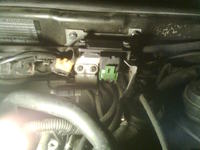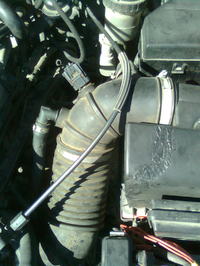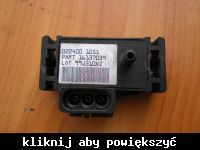Hello
A friend brought me a Volvo V40 1.8 petrol / lpg 96r. The engine has no power, it tugs. After removing (no matter whether the cap from the candle, or the power of the injector, whether gas or LPG) from the third cylinder there is no change. From the first and last car immediately starts to jerk more and goes out. After removing from the second cylinder a little goose works but does not go out. I would add that the car was at a few mechanics, and ignition coils, candles, cables, injectors and engine driver were replaced. Of course, all without changes. Typically, the car does not work on the third cylinder, or gently in the second there are also some disorders. It was connected to the computer, no faults came up. Cylinder pressure, 13 bar each. We accidentally started moving the hoses from underpressure (there are a lot of them) the car sometimes started to work as it should. And now like this:

If I unplug this entire black lower cube (I think it's a vacuum valve, there are two vacuum hoses attached to it) there are no changes in the engine's operation.
If I unfasten this cube with green plastic there are also two vacuum hoses attached, the car goes out immediately.
What is the first one (valve) for which after disconnection there are no changes in the engine's operation? is it possible that because of him these are problems with the engine?
How do I find out which vacuum device is inefficient and through which the car fails?
A friend brought me a Volvo V40 1.8 petrol / lpg 96r. The engine has no power, it tugs. After removing (no matter whether the cap from the candle, or the power of the injector, whether gas or LPG) from the third cylinder there is no change. From the first and last car immediately starts to jerk more and goes out. After removing from the second cylinder a little goose works but does not go out. I would add that the car was at a few mechanics, and ignition coils, candles, cables, injectors and engine driver were replaced. Of course, all without changes. Typically, the car does not work on the third cylinder, or gently in the second there are also some disorders. It was connected to the computer, no faults came up. Cylinder pressure, 13 bar each. We accidentally started moving the hoses from underpressure (there are a lot of them) the car sometimes started to work as it should. And now like this:

If I unplug this entire black lower cube (I think it's a vacuum valve, there are two vacuum hoses attached to it) there are no changes in the engine's operation.
If I unfasten this cube with green plastic there are also two vacuum hoses attached, the car goes out immediately.
What is the first one (valve) for which after disconnection there are no changes in the engine's operation? is it possible that because of him these are problems with the engine?
How do I find out which vacuum device is inefficient and through which the car fails?




